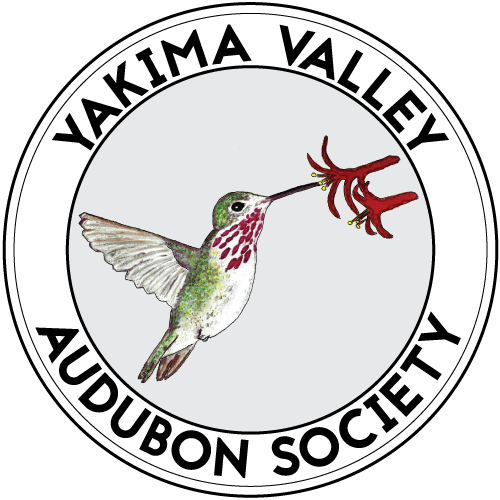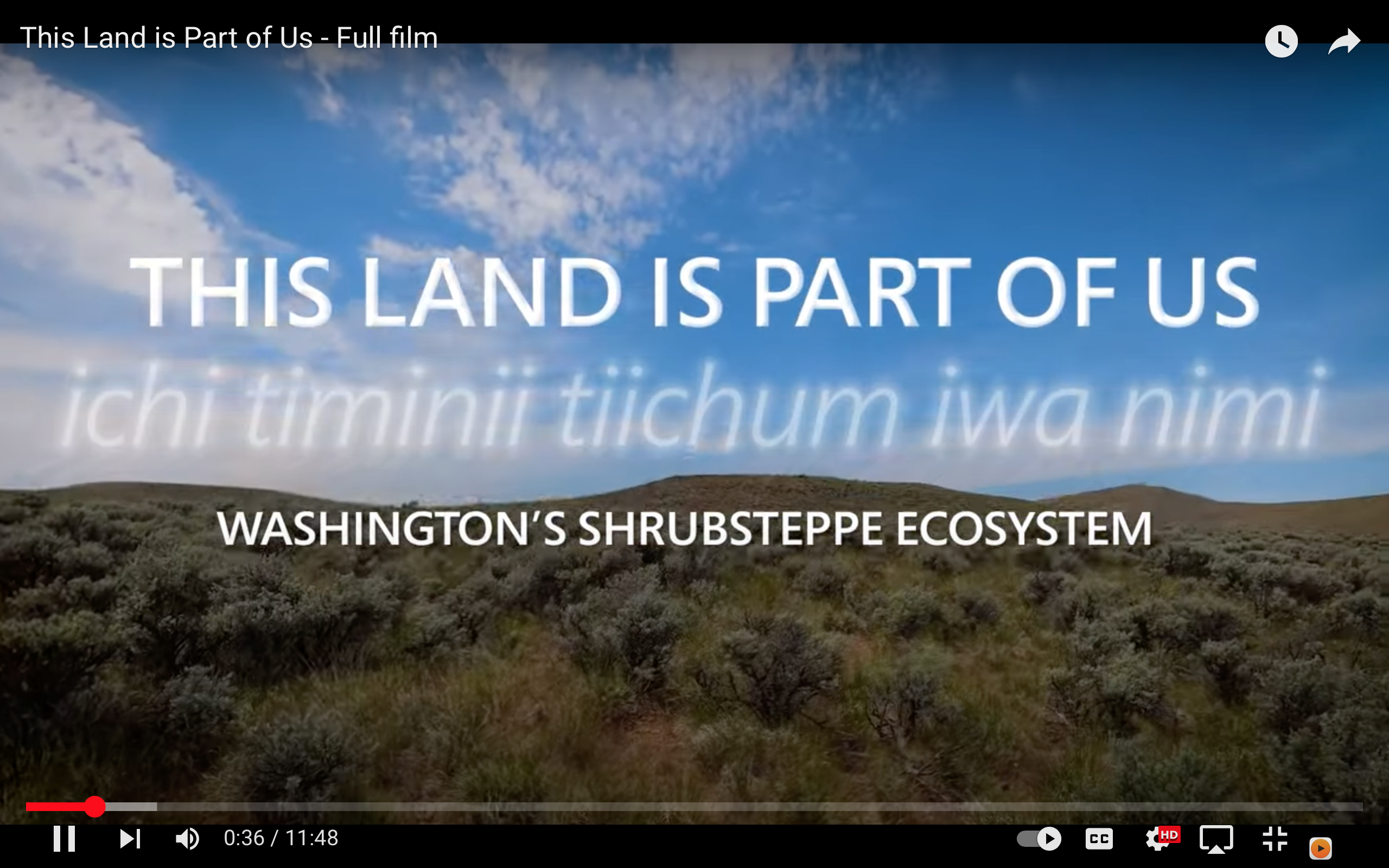Additional Conservation Actions
Meet the Shrub-steppe!
This Land is Part of Us, introduces us to the beauty and wonder of the shrub-steppe. Produced in partnership by the Washington Department of Fish and Wildlife (WDFW) and Conservation Northwest, it is a tribute to the land so familiar to us in the Yakima Valley. Scott Downes, WDFW biologist and YVAS Member helped produce this awarding-winning short film.
“When you put yourself down at the level of that landscape you are going to see a forest, it’s just a different type of forest. From the big, tall shrubs, to the real small lichens, it’s all integrated into this amazing landscape that is just so hard to see when we are standing a few feet above it, driving by at 60 miles per hour. It’s definitely not a desert.” ~Michael Schroeder, Research Scientist, WDFW
Click here to view This Land is Part of Us
New Solar Farm Guidelines for Columbia Plateau
Washington State University, working with developers and the public, has drafted guidelines for the siting and design of solar farms. This is particularly timely as there are currently dozens of projects in development for the Columbia Plateau. YVAS Conservation Chair, Stan Isley, represented YVAS on the committee helping to ensure impacts to habitat, birds and other wildlife were addressed. If adoped, this document will ensure these green energy installations do not create adverse environmental impacts. The final report was finished June of 2023 and is under consideration by the State Legislature.
Click here to review this document.

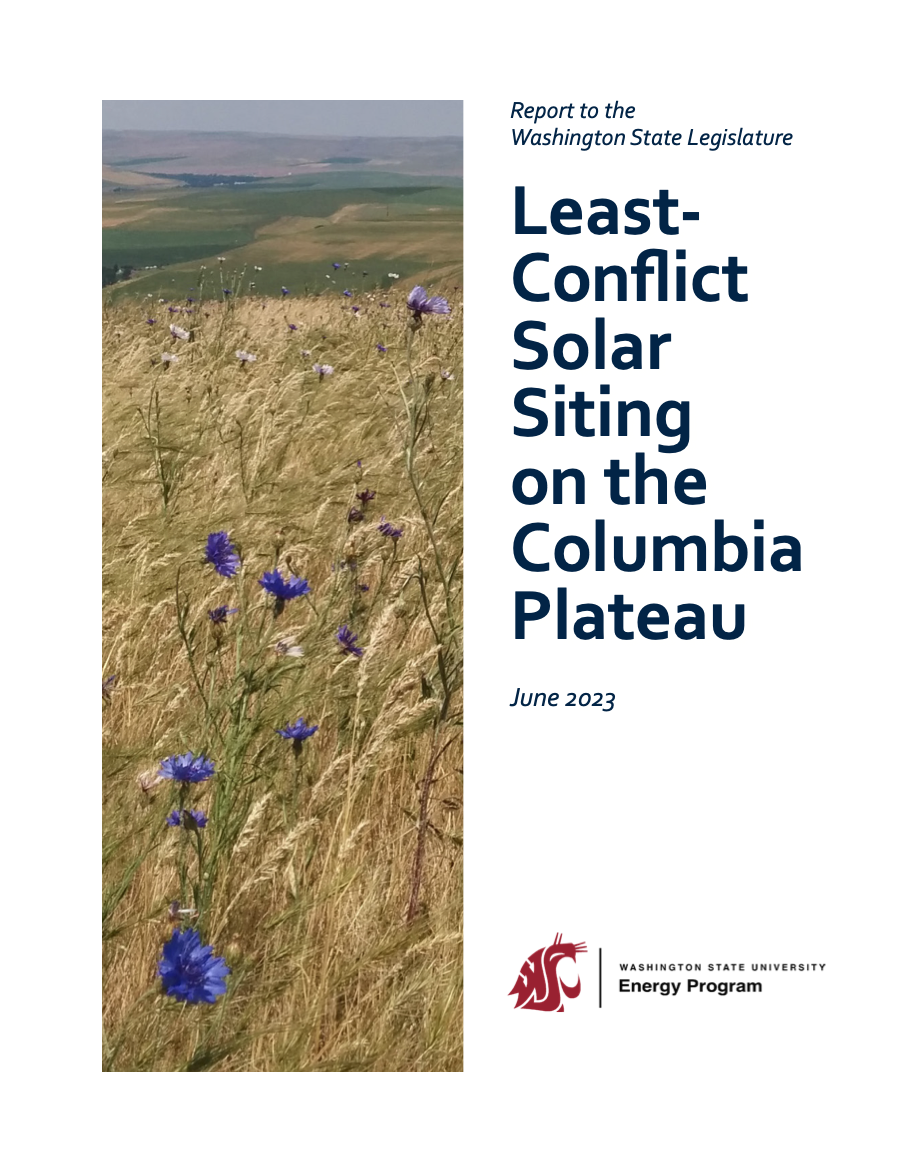
Sagelands Program by Audubon Washington
Audubon Washington is addressing threats to the shrub-steppe habitat with the formation of the Shrub-steppe Committee (YVAS members participate) and has commenced the Sagelands Program: Identifying and protecting Washington’s shrub-steppe ecosystem.
“The sagebrush steppe is an iconic habitat of the western United States, a seemingly vast and open landscape described by some as the “sagebrush sea.” Here in Washington State, approximately 10.5 million acres of the Columbia Plateau ecoregion were once covered by sagebrush and native grasses. Today, these arid lands have largely been converted to agricultural fields and fragmented by residential and urban development, resulting in over 50{aaee1b3f5006a8ef21ed423cd59812c346955478dd9345c6c2ffdeb36c0a255e} loss of our historic sagebrush habitat. The remaining sagebrush areas are under threat from climate change, development pressure, increased fire frequency, incompatible grazing practices, and invasive species.
Through community science and advocacy, landowner outreach, collaborative partnerships and policy initiatives, Audubon Washington and our local chapters are building on our record of conservation action to support local economies and secure the future for sagebrush bird species and the habitat they rely on.
In the arid lands of the Columbia Plateau we work with our chapter network and partners in the the Arid Lands Initiative to identify, connect, and protect the best remaining bird habitat. We manage local, hands-on efforts to:
- Protect remaining critical sagebrush habitat
- Close information gaps in our knowledge of focal bird species’ distribution and habitat needs
- Build public-private partnerships in support of habitat connectivity and rangeland fire
- Influence land management in priority sagebrush lands
- Advance multi-benefit renewable energy siting”
Click here to learn more.
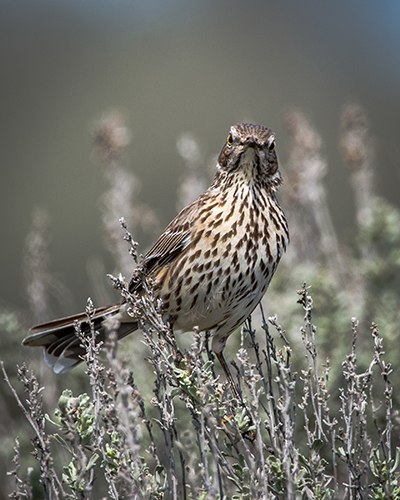
Sage Thrasher, photo: Sharon Lindsay
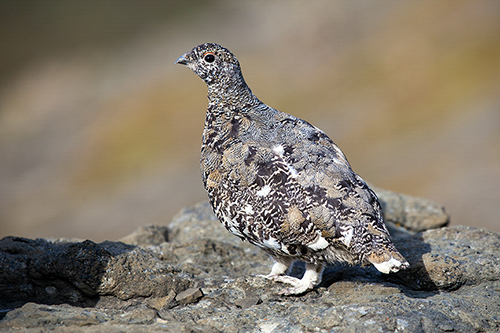
White-tailed Ptarmigan, photo: Daniel Leifhei
